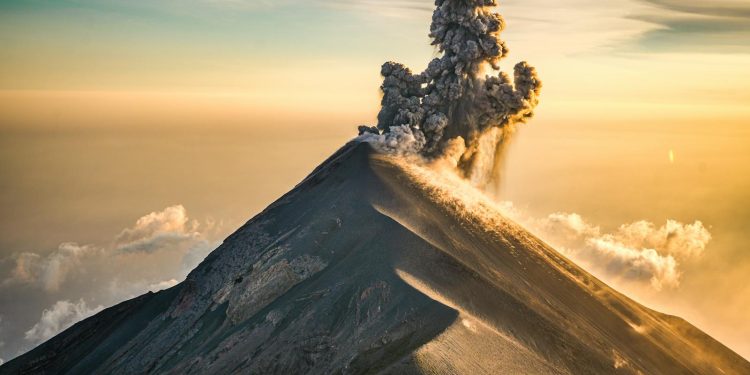Traveling is often about discovering new landscapes, savoring exotic cuisines, and embracing different lifestyles. But for those with an adventurous spirit, the thrill of experiencing a culture different from their own can be the most rewarding aspect of any journey. Whether it involves trekking through ancient ruins, joining traditional ceremonies, or exploring far-flung villages, the world is filled with cultural destinations that beckon adventurous travelers. These destinations promise not only the rush of adventure but also the chance to connect deeply with people and their customs, providing a profound insight into diverse ways of life.
The Wonders of Guatemala: Ancient Mayan Mysteries
Guatemala is a perfect blend of natural beauty and cultural depth, offering adventurous travelers a chance to explore ancient ruins, vibrant markets, and traditional communities. The country is home to some of the most important archaeological sites of the Mayan civilization, including the majestic ruins of Tikal, hidden deep in the rainforest. Hiking through Tikal National Park is an adventure in itself; the sound of howler monkeys echoes through the jungle as you navigate your way through towering temples and carved stone monuments that rise from the dense foliage.
For a more immersive cultural experience, head to Lake Atitlan, surrounded by volcanoes and small villages each with its own distinct personality. The village of Santiago Atitlan is an especially rewarding stop, where you can witness the unique syncretism of Catholicism and Mayan beliefs, and meet local artisans who weave traditional textiles on backstrap looms. The colorful markets of Chichicastenango are another must-see, with stalls filled with handmade crafts, fresh produce, and vibrant traditional attire that reflect the rich culture of the indigenous K’iche’ people. Guatemala offers adventure and cultural immersion in equal measure, providing travelers with an unforgettable journey into the heart of the Mayan world.
Mongolia: Nomadic Heritage on the Steppe
For travelers seeking an off-the-beaten-path cultural experience, Mongolia is an unparalleled destination. The vast open steppe, dotted with yurts and grazing livestock, offers a glimpse into a traditional way of life that has remained largely unchanged for centuries. Staying in a ger camp with a nomadic family is an experience that brings you face-to-face with Mongolia’s hospitality, offering insight into the customs and daily life of the people who live in harmony with their harsh natural environment.
Adventure in Mongolia also means participating in some of the country’s legendary festivals, such as the Naadam Festival, a celebration of Mongolia’s “Three Manly Sports”: wrestling, archery, and horse racing. The festival, held every July, provides an incredible opportunity to witness traditional Mongolian culture at its most vibrant, with colorful costumes, stirring music, and age-old athletic contests.
A journey into the Gobi Desert adds yet another layer to your cultural adventure. Riding camels across the golden dunes and exploring the ancient petroglyphs left by early inhabitants connect travelers with Mongolia’s rich history. Mongolia offers a rare combination of untamed adventure and cultural exploration, where the landscapes and the people together weave an unforgettable travel experience.
Ethiopia: A Cradle of Civilization
Ethiopia, often referred to as the cradle of civilization, is a destination that is as culturally rich as it is adventurous. The country’s diverse landscapes range from the soaring peaks of the Simien Mountains to the otherworldly Danakil Depression, one of the hottest places on earth. However, it’s the people, culture, and history that truly set Ethiopia apart for adventurous travelers.
Lalibela is an absolute must-see, known for its stunning rock-hewn churches that date back to the 12th century. The monolithic churches, carved entirely out of volcanic rock, are still active places of worship and provide a glimpse into Ethiopia’s deep Christian heritage. Visiting Lalibela during one of the major Ethiopian Orthodox festivals, such as Genna (Ethiopian Christmas), offers a spiritual and cultural experience unlike any other, with thousands of pilgrims dressed in white, chanting, and celebrating in this mystical setting.
Travelers should also venture to the Omo Valley, one of the most culturally diverse regions in the world, home to a variety of ethnic groups, each with its own customs, languages, and traditions. Visiting the Hamer, Mursi, or Dassanech tribes is an eye-opening experience, as you learn about their traditional rituals, such as the Hamer bull-jumping ceremony, which is an important rite of passage for young men. Ethiopia is a destination where the past and present coexist in fascinating ways, offering an adventurous journey into the heart of a culture steeped in history and tradition.
Japan: Ancient Traditions in Modern Times
Japan may be famous for its neon-lit cities and cutting-edge technology, but for the adventurous cultural traveler, it’s the country’s deep traditions that make it so captivating. To step back in time, visit the mountain village of Shirakawa-go, a UNESCO World Heritage site known for its distinctive gassho-zukuri farmhouses, which have thatched roofs designed to resemble praying hands. Staying in one of these traditional houses gives you an intimate look at rural Japanese life and a chance to experience true Japanese hospitality.
Another culturally rich adventure awaits on the Kumano Kodo pilgrimage, a network of ancient trails that crisscross the Kii Peninsula. Walking these trails, which have been used for over a thousand years by pilgrims seeking spiritual fulfillment, allows travelers to experience Japan’s spiritual side amidst lush forests, sacred shrines, and small mountain villages. Along the way, you can stay in ryokan (traditional inns) and soak in natural onsen hot springs, providing a perfect blend of adventure, culture, and relaxation.
For a completely different cultural immersion, head to the island of Okinawa, which has its own unique traditions distinct from mainland Japan. Okinawan culture is influenced by its Ryukyu Kingdom history and incorporates distinct music, dance, and culinary practices. Participating in a traditional Eisa dance during one of the island’s many festivals is a memorable experience, providing insight into the joyful spirit and resilience of the Okinawan people.
Morocco: A Feast for the Senses
Morocco is a destination that offers a sensory adventure like no other, with its bustling souks, aromatic spices, and vibrant cultural heritage. For those seeking a deeper understanding of Morocco’s culture, the Imperial Cities of Fes, Marrakech, Meknes, and Rabat are an ideal starting point. Wander through the medinas, where artisans craft everything from intricate leatherwork to delicate metal lanterns, and explore ancient palaces that tell stories of Morocco’s glorious past.
In Fes, the Al Quaraouiyine University, recognized as the world’s oldest existing educational institution, provides a fascinating glimpse into the scholarly legacy of the Islamic world. Exploring Fes’ labyrinthine medina, with its centuries-old tanneries, bustling markets, and hidden riads, feels like stepping back in time to a different era.
For those who want to combine culture with adventure, a trek through the High Atlas Mountains is an unforgettable experience. Visiting Berber villages along the way offers insight into the life of Morocco’s indigenous people, who have maintained their distinct culture for centuries. You can stay in a traditional gîte, enjoy hearty Moroccan dishes, and learn about Berber customs directly from the locals.
Another cultural highlight is a journey into the Sahara Desert, where you can ride camels across vast dunes and spend the night in a traditional Berber camp. Listening to the haunting melodies of Berber musicians under a star-filled sky is an experience that connects travelers with the timeless beauty of Morocco’s desert culture.
Papua New Guinea: A Last Frontier of Tribal Cultures
Papua New Guinea is one of the most culturally diverse countries in the world, with over 800 distinct languages and a multitude of tribal traditions that continue to thrive. For adventurous travelers, the opportunity to experience these cultures firsthand is an unforgettable journey into a world that remains largely untouched by modernity.
One of the best ways to experience Papua New Guinea’s cultural diversity is by attending a sing-sing, a traditional gathering where tribes from different regions come together to showcase their unique music, dance, and attire. The Mount Hagen Cultural Show is the largest sing-sing in the country, featuring hundreds of tribes adorned in vibrant costumes made of feathers, shells, and body paint. The event is a spectacular display of cultural pride and provides a rare glimpse into the traditions of Papua New Guinea’s people.
Exploring the Sepik River is another culturally rich adventure, as the river is home to many small villages known for their elaborate spirit houses (haus tambaran) and intricate wood carvings. Spending time in a Sepik village allows travelers to learn about the significance of the carvings, as well as the rituals and beliefs that shape everyday life. Papua New Guinea is a true frontier for cultural exploration, offering adventurous travelers a chance to connect with some of the most unique and resilient cultures in the world.
Peru: Beyond Machu Picchu
While Machu Picchu is often the main attraction for travelers to Peru, the country offers a wealth of cultural experiences beyond the famous Inca citadel. The Sacred Valley is dotted with small villages where Quechua culture is very much alive. In places like Pisac and Ollantaytambo, travelers can explore bustling markets, witness traditional weaving techniques, and even take part in local ceremonies that honor Pachamama (Mother Earth).
For an even deeper cultural adventure, venture into the Amazon Basin, where indigenous communities continue to live in close harmony with the environment. Guided visits to villages along the Amazon River provide insight into the traditions and survival skills of these communities, from medicinal plant use to the spiritual beliefs that govern their relationship with the natural world. Staying in a jungle lodge and participating in activities led by indigenous guides is a way to experience the Amazon not only as an adventurer but as a student of its rich cultural tapestry.
Another cultural highlight of Peru is Lake Titicaca, the world’s highest navigable lake. Here, travelers can visit the Uros Islands, made entirely out of reeds, and learn how the Uros people have maintained their unique way of life for generations. Spending a night with a host family on Amantani Island provides an intimate look at Quechua culture, with home-cooked meals, traditional dances, and breathtaking views of the Andean night sky.















